Expedition Log: Palau – Day 14
The Indo-Pacific is home to a high diversity of small, elongate bottom dwellers— blennies and gobies. From low visibility sandy bottoms to high-energy outer reefs, blennies and gobies have made a prominent appearance in our fish surveys in Palau.
Due to their similar body shape, size and appearance, gobies are often confused with blennies. A simple way to distinguish blennies from gobies is by noting their single long continuous dorsal fins but to identify individuals to a species level, often a photograph may be necessary.
Working through fish identification books and comparing photos from the day is a nightly event for the fish team on “The Shadow.” These sessions can be tedious at times but very satisfying when new fish are identified.
I would like to share with you a gallery of some of the blennies and gobies we have seen so far in Palau.
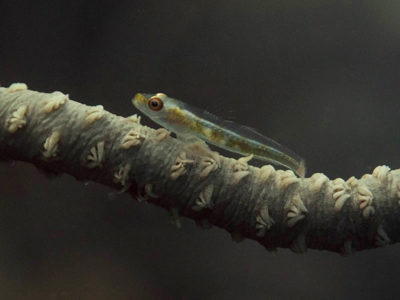
Black Coral Goby – Bryaninops tigris
Sea Whip Gobies are commensal on gorgonians (commonly known as sea whips). The Black Coral Goby is only found on the black whip coral, Cirrhipathes sp.
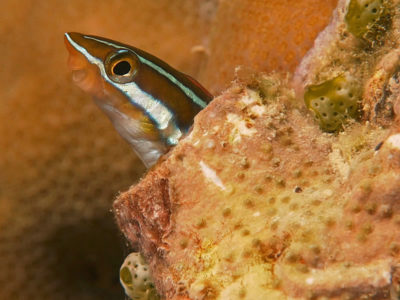
Bluestriped Fangblenny – Plagiotremus rhinorhynchos
The Bluestriped Fangblenny spends much of its day swimming above the sea floor and feeds on the skin and scales of other fishes, which they aggressively attack.
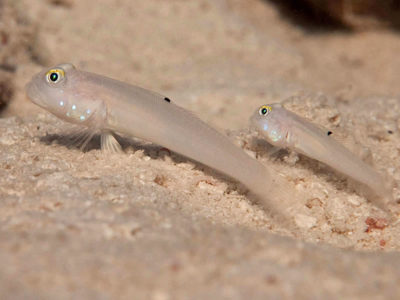
Sixspot Goby – Valenciennea sexguttata
Often found in pairs, Sixspot Gobies share burrows under rocks on fine sandy bottoms.
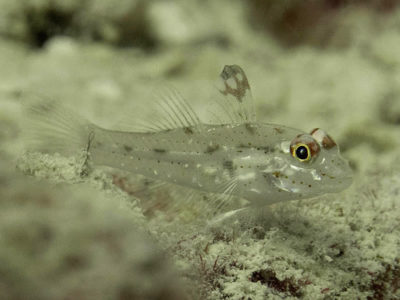
Signalfin Goby – Fusigobius signipinnis
The Signalfin Goby is mostly translucent except when it flashes its dorsal ‘signal’ fin.

Stonycoral Ghostgoby – Pleurosicya micheli
The Stonycoral Ghosthoby lives on a wide variety of hard corals on coral rich reefs.
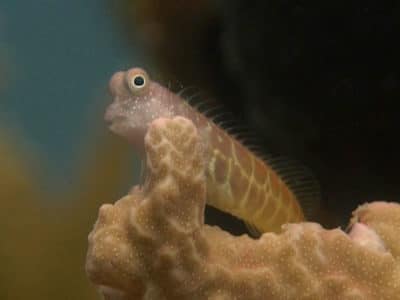
Segmented Blenny – Salarias segmentatus
The Segmented Blenny is often found on coral outcroppings in shallow turbid waters of sheltered reefs
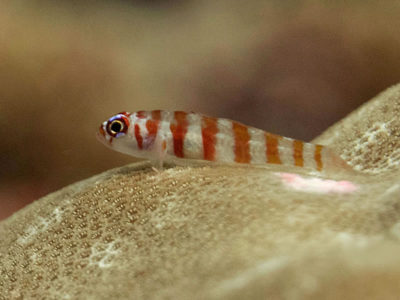
Candycane Dwarfgoby – Trimma cana
Candycane Dwarfgobies often form small groups on the surface of hard corals of the steep outer reef slopes.
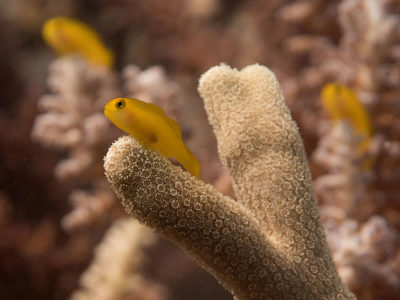
Yellow Coralgoby – Gobiodon okinawae
The yellow coralgoby inhabits the coral reefs of sheltered lagoons. Unlike most gobies, which are burrowers, Gobiodon sp. roost in the outer branches of Acropora corals. These fish are not generally aggressive, though they can actively protect their territory against their own kind.
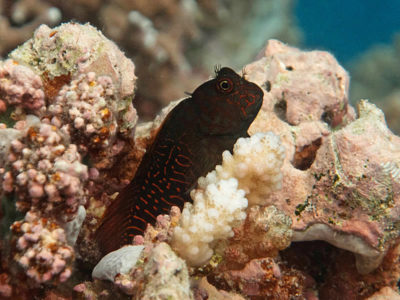
Springer’s Blenny – Cirripectes springeri
Springer’s Blenny is easily identified by the bright red ring around its eye and fringe-like cirri on its nape.

Red Banded Shrimpgoby – Amblyeleotris fasciatus
Shrimpgobies share burrows with snapping shrimps from the genus Alpheus. These nearly blind shrimps use the gobies to warn them of danger while the gobies use the shrimps to provide and maintain a ready-made place to hide.

Sand Shrimpgoby – Ctenogobiops feroculus
Shrimpgobies share burrows with snapping shrimps from the genus Alpheus. These nearly blind shrimps use the gobies to warn them of danger while the gobies use the shrimps to provide and maintain a ready-made place to hide.
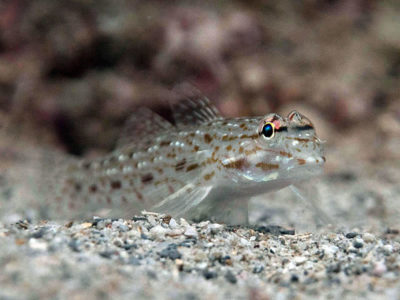
Orangespotted Goby – Istigobius rigilius
The Orangespotted Goby appears similar to other goby species but can be identified by a mid-lateral row of slightly larger orangish brown double spots.

Triplespot Blenny – Crossosalarias macrospilus
The Triplespot Blenny can be identified by the large brown spot in front of its dorsal fin. Identification can be difficult since they are often hiding with only their small heads exposed.
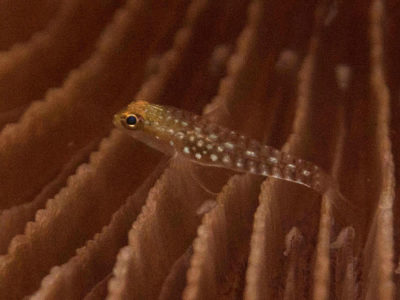
Adorned Pygmygoby – Eviota sigillata
The Adorned Pygmygoby can reach a length of just 3 cm and is suggested to have the shortest lifespan for a vertebrate, living for at most 59 days.
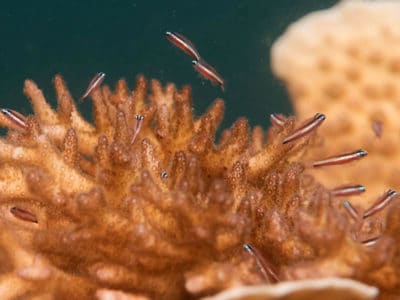
Twostripe Pygmygoby – Eviota bifasciata
Twostripe Pygmygobies are found in groups which hover above branching or tabular coral in sheltered coral reefs.
Photos by Stefan Andrews